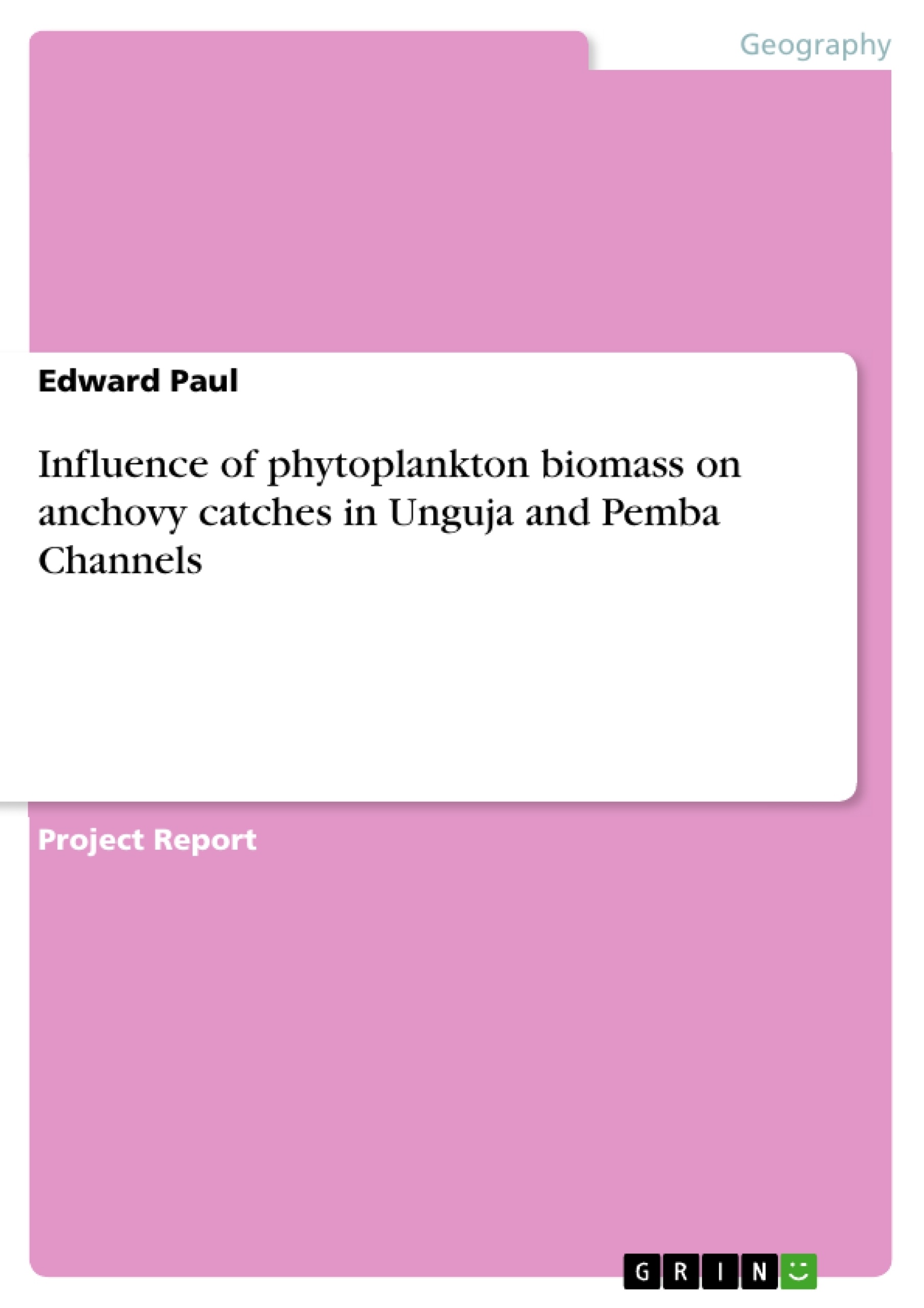This work aims to analyse the spatial and temporal variation of phytoplankton biomass in the eastern parts of the Unguja and Pemba Channels and its impact on anchovy catches. Secondary data from anchovy catches and Chl-a concentrations will be used as a proxy for phytoplankton biomass to gain important ecological and fisheries science insights.
The study by Edward Paul, submitted to the University of Dar es Salaam, addresses the important role of phytoplankton as primary producers in aquatic ecosystems. Using secondary data on anchovy catches and Chl-a concentrations as a measure of phytoplankton biomass, the study examines the spatial and temporal variation of this biomass in the eastern parts of the Unguja and Pemba Channels and its impact on fisheries. Chl-a concentrations were found to be higher in Unguja than in Pemba, with significant differences between seasons. Interestingly, anchovy catches were higher in the Pemba Channel, with the correlation between Chl-a and anchovy catches being positive but not significant. These results provide important insights for fisheries science and the protection of marine ecosystems.
Table of Contents
Acknowledgement
Dedication
List of abbreviations
Abstract
CHAPTER ONE
1 INTRODUCTION
1.1 General Introduction
1.2 Literature Review
1.2.1 Phytoplankton distribution and abundance
1.2.3 Fisheries in the eastern parts of Pemba and Zanzibar Channels
1.2.4 Small pelagic in Zanzibar and Pemba Channels
1.2.5 The influence of seasonal monsoon winds on phytoplankton productivity and fisheries along the eastern parts of Zanzibar and Pemba Channels
1.3 Statement of the Research Problem
1.4 Significance of the Study
1.5 Objectives
1.5.1 General objective
1.5.2 Specific objectives
1.5.3 Hypotheses
1.6 Scope of the study
CHAPTER TWO
2 MATERIALS AND METHODS
2.1 Description of the Study Area
2.2 Sampling /Experimental Design
2.3 Data Collection
2.3.1 Satellite data
2.3.2 Anchovy catch data
2.4 Data Analysis
CHAPTER THREE
3 RESULTS
3.1 Temporal and Spatial Distribution of Chl-a Biomass
3.2 Seasonal variation in Anchovy catches in Pemba and Unguja Channels
3.3 Satellite Chl-a and anchovy catches in Pemba and Zanzibar Channels
3.3.1 Pemba Channel
3.2.2 Zanzibar Channel
CHAPTER FOUR
4 DISCUSSION
4.1 Distribution and Abundance of Phytoplankton
4.2 Relationship Between Chl-a and the Anchovy fish catches
CHAPTER FIVE
5 CONCLUSION AND RECOMMENDATIONS
5.1 Conclusion
5.2 Recommendation
REFERENCES
- Quote paper
- Edward Paul (Author), 2022, Influence of phytoplankton biomass on anchovy catches in Unguja and Pemba Channels, Munich, GRIN Verlag, https://www.grin.com/document/1442130
-

-

-

-
Upload your own papers! Earn money and win an iPhone X. -

-
Upload your own papers! Earn money and win an iPhone X. -

-
Upload your own papers! Earn money and win an iPhone X. -

-
Upload your own papers! Earn money and win an iPhone X. -

-
Upload your own papers! Earn money and win an iPhone X. -

-
Upload your own papers! Earn money and win an iPhone X. -

-
Upload your own papers! Earn money and win an iPhone X. -

-
Upload your own papers! Earn money and win an iPhone X. -

-
Upload your own papers! Earn money and win an iPhone X. -

-
Upload your own papers! Earn money and win an iPhone X.

